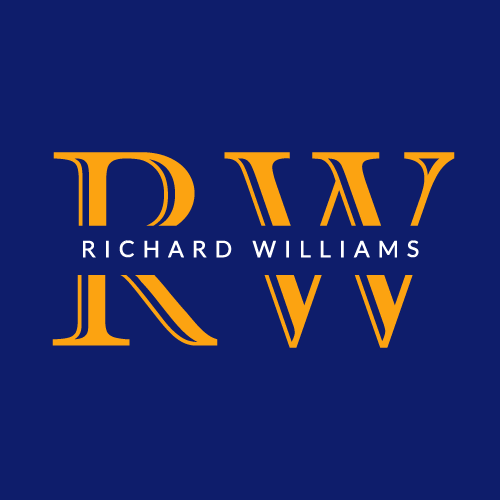The War on Drugs: A New Idea You've Never Heard
Friends,
Thank you for supporting my work and subscribing to Public Health without Politics. This week, I’m trying something new.
Over the next several posts, I’ll be publishing a paper I’ve spent a long time developing—on one of the most expensive, tragic, and persistent public health failures in American history: the War on Drugs.
Rather than taking the usual angle—more enforcement, more treatment, more persuasion—I’m going to explore a different, one might even say radical, idea.
The full version of this piece was too provocative for most mainstream journals. So I’m sharing it here, directly with you.
I hope you’ll read along, think critically, and share your ideas as we go. This conversation matters—and I’m grateful you’re part of it.
—Richard
Part One: The Drug War and a Solution
Mexican President Claudia Sheinbaum doesn’t want the U.S. Army storming into her country to wage war against the drug cartels. Understandably, most nations don’t want foreign armies unless they are in danger of being overrun, but maybe that’s because the war on drugs is a war that cannot be won by the military.
In 1971, President Richard Nixon declared a war on drugs—one that continues after over 50 years with results described by one professor as “a staggering failure.” One of the Nixon’s aides who went to prison said, “Did we know we were lying about the drugs? Of course we did.” It was really a war against blacks and hippies. But Nixon’s war on drugs was far from the first. The Qing Dynasty in China tried to ban opium smoking in 1730.
Right now, after all these years, the drug industry in the U.S. has the “largest per person drug usage per year in American history.”
In fact, in nearly 300 years, no one has had a solution. At the end of this series, I’ll suggest one that is likely to be rejected by virtually everyone who makes their living on the war on drugs. What’s more, no reputable public health journal will buy into this solution either.
It’s not just drugs—we have also tried to ban alcohol and tobacco. The 1920 passage of the Volstead Act enacted the 18th Amendment, which prohibited various types of alcohol. This in turn gave rise to bootlegging, speakeasies, and organized crime. While consumption initially decreased to about 30% of pre-Prohibition levels, it fully recovered during the latter part of 1933.
The movement to end alcohol consumption has never quite gone away as, even today, the federal government’s Dietary Guidelines for Americans suggests that women should have no more than one drink per day, and men no more than two drinks per day, and that it’s better to not drink at all.
Today, federal agencies also have a war on tobacco and nicotine. Both the FDA and the Centers for Disease Control (CDC) have declared that there are no safe tobacco products. Despite the fact that e-cigarettes are 95% less harmful than cigarettes, the FDA has only approved 34 out of 6.5 million applications for these products. The agency continues to warn consumers about the fact that some of the chemicals in e-cigarettes are the same as those in cigarettes, without talking about the drastically different levels of exposure and overall risk.
Just Say No
People take drugs for many reasons including curiosity, a desire to fit with peers, to feel better or to perform better. Trying to outlaw them or persuade people not to take drugs conveniently ignores the fact that people have been using them since the dawn of civilization.
One of the earliest drugs associated with human consumption was ephedra, an energy drug that was found in ancient Mesopotamia 3,500 years ago. Later known as “Soma,” it was considered a god.” Like many drugs throughout history it was associated with “ritual or religious activity.”
The chart below shows a history of human additions to the cornucopia of drugs used for medicinal, religious and recreational use. It’s grown much bigger since the 30s.
The persuasion approach was most famously championed by First Lady Nancy Reagan’s pithy, “Just say no!” I thought that was rude, it should have been, “Just say “no thank you.” Her target back in the 1980s was an epidemic of crack cocaine. The drug was cheap, highly addictive and produced a fast-acting euphoric effect. Today, nearly 1 million Americans still use it.
Estimates put the number of U.S. drug, alcohol and other rehabilitation facilities at between 14,000 and 16,000 at a cost of $42 billion a year. There are over 900,000 people annually treated in them. The costs range from $2,000 to $32,000 per person for rehabilitation or detoxification with over 33,000 U.S. drug counselors administering treatment.
The National Institute of Health recently acknowledged that “addiction is a long-lasting and complex brain disease,” another reason that persuasion or laws haven’t worked. Nevertheless, we’ve got whole federal agencies that are tasked with talking people out of them…
Next week, we’ll talk about the war on the drug supply—from calls to send troops into Mexico to the rise of dangerous synthetic drugs.
In between the posts, I’d love your thoughts and feedback. What are your suggestions for stopping people from wanting drugs?
Let me know in the comments below.
